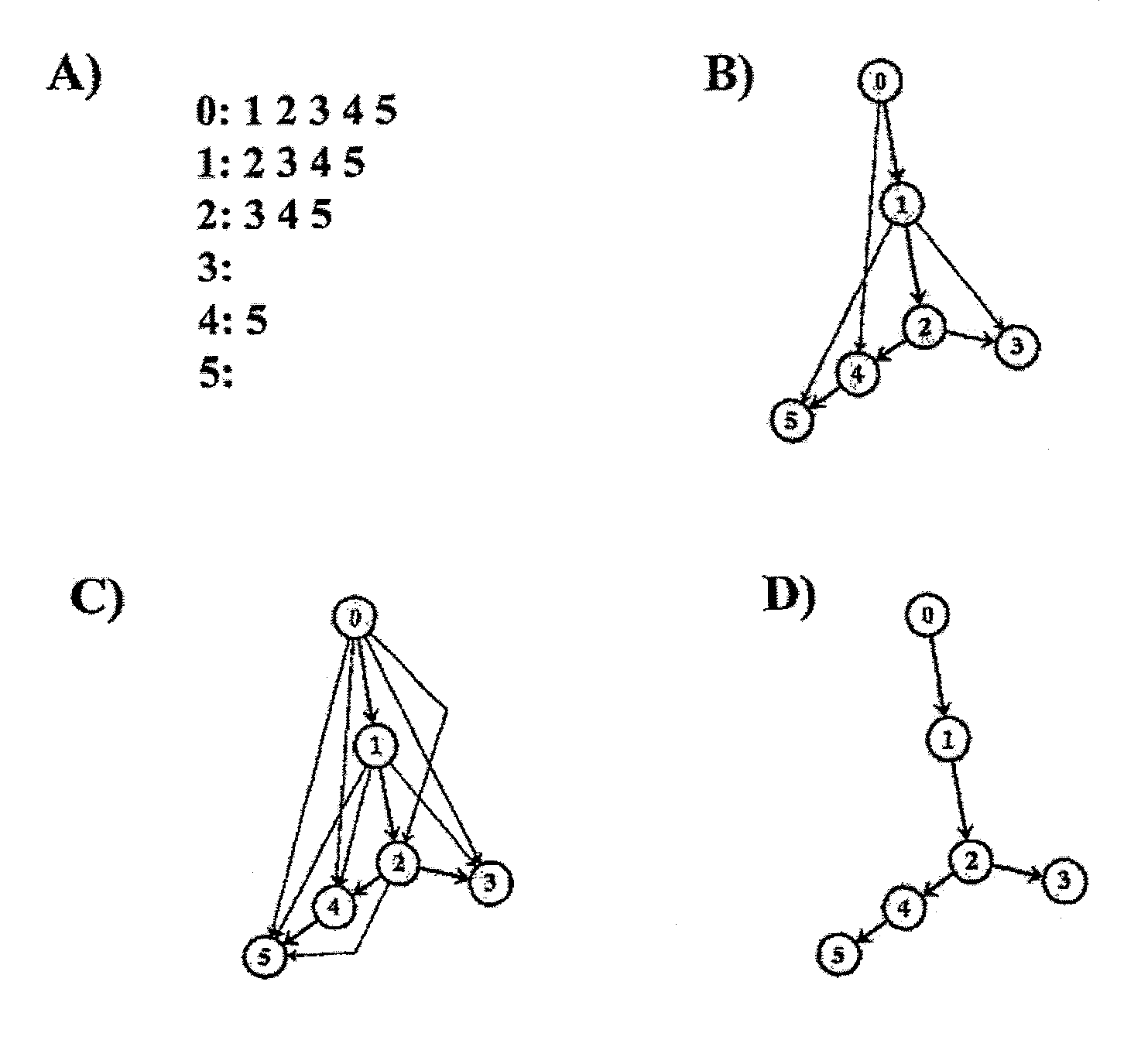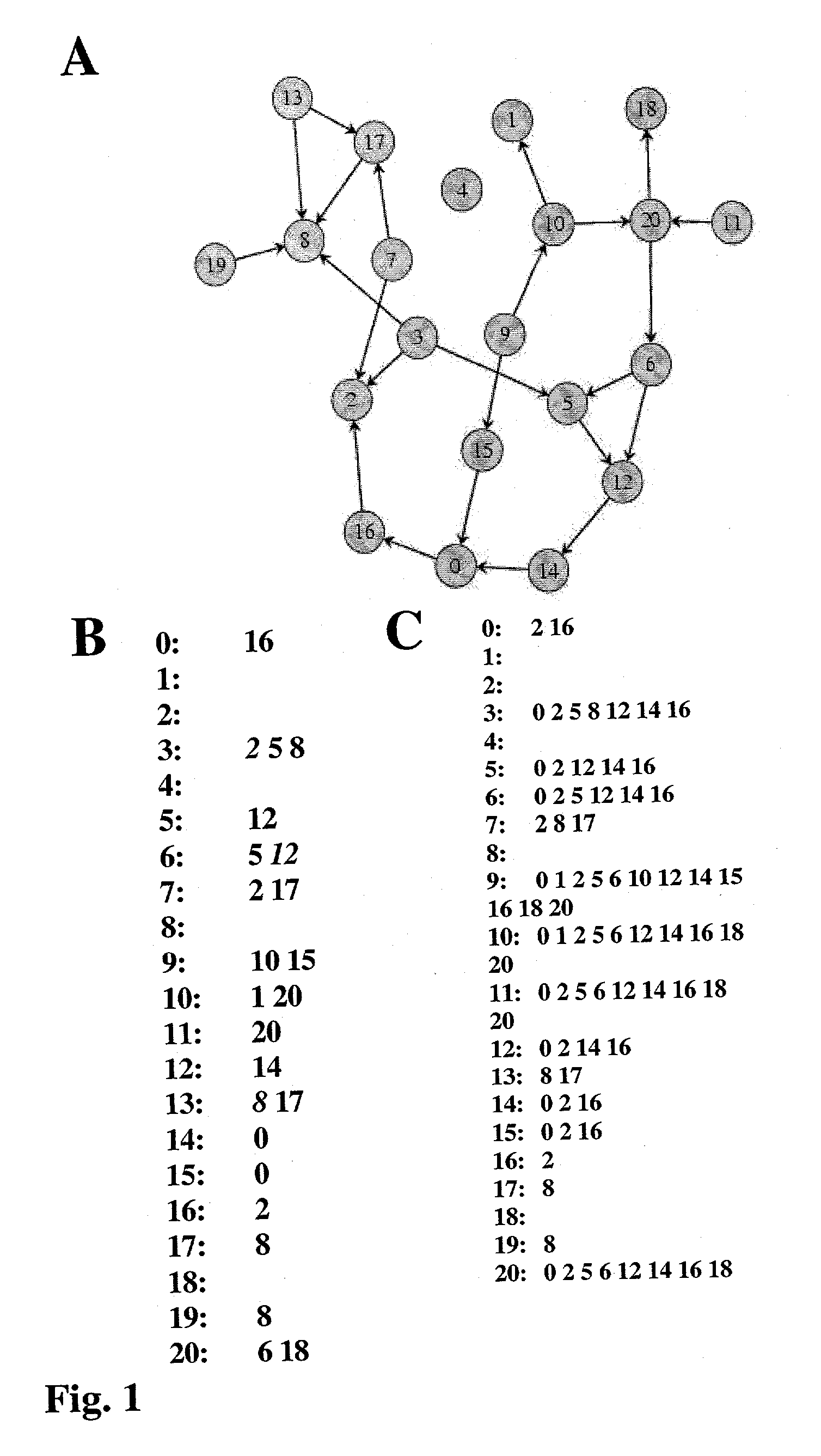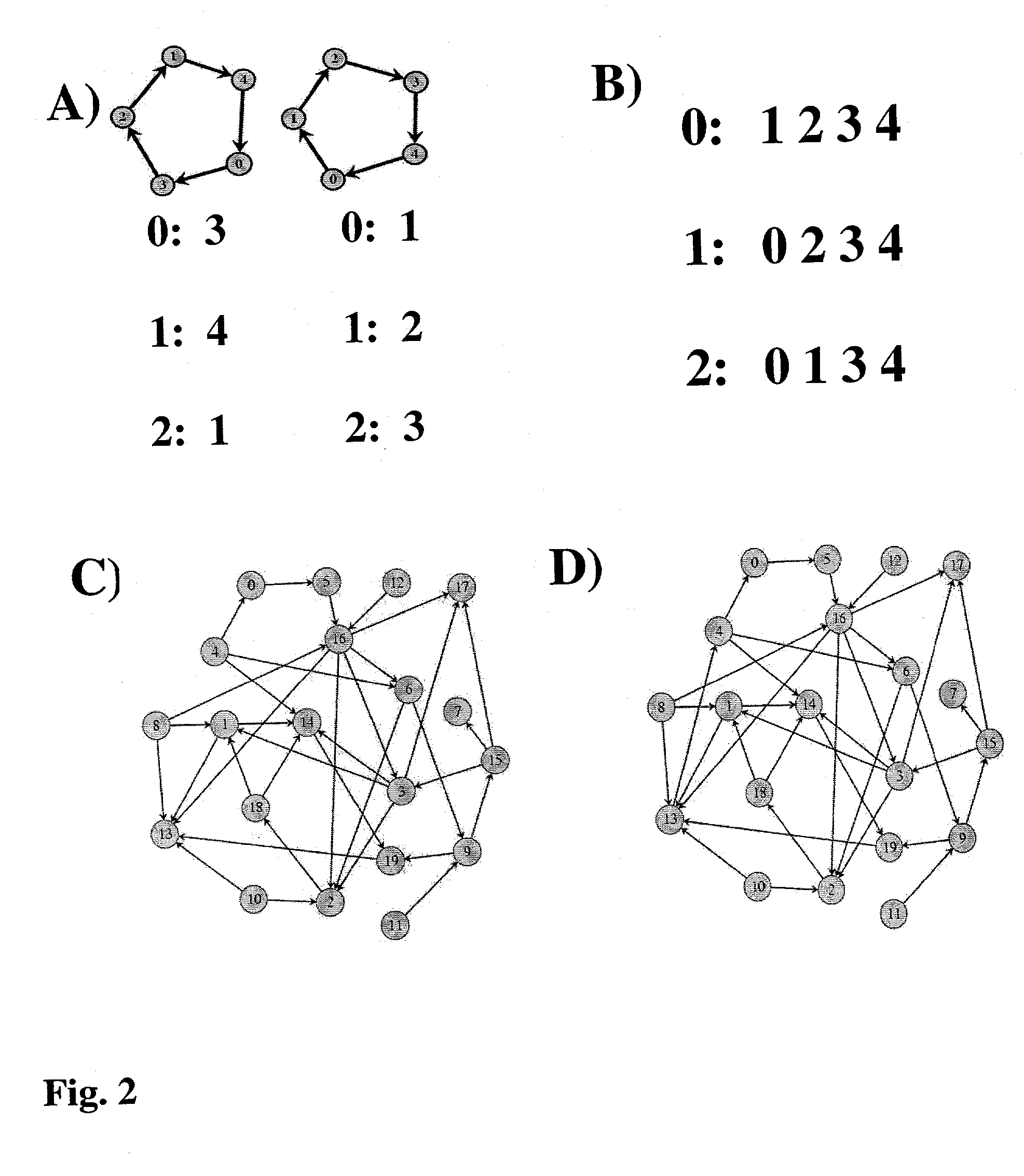System and method for reconstructing pathways in large genetic networks from genetic perturbations
a genetic network and system technology, applied in the field of system and method for reconstructing pathways in genetic networks from genetic perturbations, can solve the problems of correlated expression, the number of modules and the number of isolated genes inferred from correlated expression are likely underestimates, and achieve the effect of reducing research costs, increasing complexity and problems
- Summary
- Abstract
- Description
- Claims
- Application Information
AI Technical Summary
Benefits of technology
Problems solved by technology
Method used
Image
Examples
examples
[0122]The following examples are presented by way of illustration of the previously described invention and are not limiting of that description.
[0123]The system and method of the present invention utilize the algorithms described herein to reconstruct both large and small genetic circuits. The algorithm presented here can be used to reconstruct a genetic network for an entire organism from perturbation data of all genes. At the time of this writing, more than 90% of all genes of the yeast Saccharomyces cerevisiae have been perturbed by targeted gene deletion. Similarly large-scale genetic perturbation projects are under way in the fruit fly Drosophila melanogaster, the nematode Caenorhabditis elegans, as well as in plants. In such experiments some genes are difficult to perturb, because they are essential to the organism. It is then also difficult to assess how their activity affects the activity of other genes. Sometimes a different kind of perturbation provides a solution to this...
PUM
| Property | Measurement | Unit |
|---|---|---|
| abiotic environmental stress | aaaaa | aaaaa |
| structure | aaaaa | aaaaa |
| size | aaaaa | aaaaa |
Abstract
Description
Claims
Application Information
 Login to View More
Login to View More - R&D
- Intellectual Property
- Life Sciences
- Materials
- Tech Scout
- Unparalleled Data Quality
- Higher Quality Content
- 60% Fewer Hallucinations
Browse by: Latest US Patents, China's latest patents, Technical Efficacy Thesaurus, Application Domain, Technology Topic, Popular Technical Reports.
© 2025 PatSnap. All rights reserved.Legal|Privacy policy|Modern Slavery Act Transparency Statement|Sitemap|About US| Contact US: help@patsnap.com



